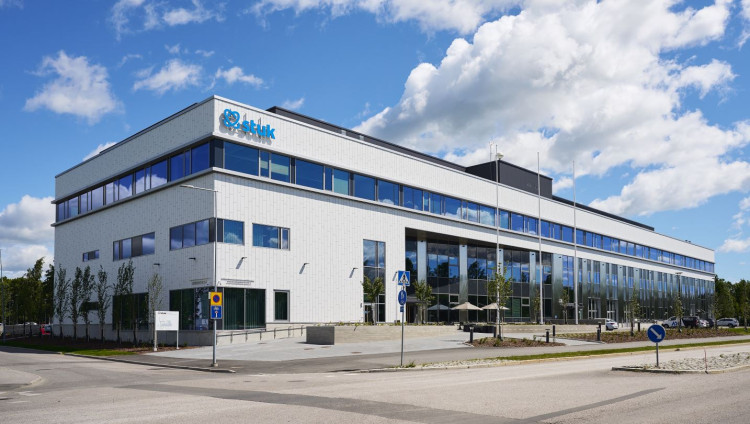An International Atomic Energy Agency (IAEA) mission said Finland has strengthened its regulatory framework for nuclear and radiation safety and made progress in recent years. The team also identified areas for possible improvements including expediting a planned amendment of the legislation so that it covers all stages of the life cycle for nuclear and radiation facilities.
The Integrated Regulatory Review Service (IRRS) team concluded a 12-day mission to Finland on 14 October. The mission was conducted at the request of the Government of Finland and hosted by the Radiation and Nuclear Safety Authority (STUK), the national regulatory authority for radiation and nuclear safety.
Using IAEA safety standards and international good practices, IRRS missions are designed to strengthen the effectiveness of the national regulatory infrastructure, while recognizing the responsibility of each country to ensure nuclear and radiation safety.
The team, comprising 18 senior regulatory experts from 14 Member States, one observer, as well as four IAEA staff members reviewed the regulatory oversight of facilities and activities using nuclear material and radiation sources including emergency preparedness and response, decommissioning, and occupational, medical and public exposure control.
“Our review concluded that Finland has a robust and up-to-date regulatory framework that aligns with IAEA Safety Standards,” said the IRRS team leader Sylvie Cadet-Mercier, Commissioner of the French Nuclear Safety Authority (ASN). “I am also impressed by STUK’s ongoing quest for excellence without falling into the trap of complacency.”
During the mission, the team conducted interviews with management and staff from STUK, Ministry of Social Affairs and Health, Ministry of Employment and the Economy, Ministry of Interior and the STUK’s Advisory Committee on Nuclear Safety. The team also accompanied STUK during their inspections and oversight activities at an industrial radiography facility, the Helsinki University Hospital, which operates a cancer centre with a radioisotope unit, and the Loviisa Nuclear Power Plant, which is located around 100 km east of Helsinki. Loviisa NPP is one of Finland’s two nuclear power plants, which generate about one-third of the country’s electricity.
“I’m very pleased with the outcome of the IRRS mission. We have been peer reviewed by a team of high-level experts and got valuable inputs to help us do better,” said Petteri Tiippana, STUK’s Director General. “The outcome of the mission demonstrates the real value of peer reviews. Although we did our homework very carefully prior to the mission, still the IRRS team found further areas for improvement. In other words, you may have “blind spots”, that you are not able to self-identify.”
The IRRS team identified several good practices including:
- Implementation of a systematic model for regular monitoring of licensees’ overall safety performance.
- Media training in nuclear and radiation safety to enhance public awareness.
- Development of a publicly available information system on radiation safety legislation that includes guidance and expectations from STUK for licensees.
The IRRS team made several recommendations and suggestions to further reinforce continuous improvement and further enhance the Finnish regulatory system and the effectiveness of the regulatory functions in line with IAEA safety standards.
Recommendations and suggestions for the Government of the Finland include:
- Amendment of legislation to include all stages of the life cycle for nuclear and radiation facilities, from siting to release from regulatory control.
- Ensuring an adequate level of national competencies on radiation protection.
- Strengthening coordination between organizations in emergency preparedness and response.
- Application of separate responsibilities for operation and oversight of state-owned radioactive waste.
Recommendations and suggestions for STUK include:
- Continuous development and implementation of a systematic inspector training programme.
- Enhancement of its regulation and guides in nuclear and radiation safety.
- Increase of its oversight of transport of radioactive material.
- Expansion of its requirement for emergency exercises to cover all regulated facilities and activities, including transport.
The mission will be followed by an IAEA Integrated Review Service for Radioactive Waste and Spent Fuel Management, Decommissioning and Remediation (ARTEMIS) mission – scheduled for November 2022 – which will assess radioactive waste and spent fuel management, decommissioning and remediation programmes in the country. The previous IRRS mission took place in 2012 and its follow up in 2015.
The final mission report will be provided to STUK in about three months. Finland plans to make the report public.
Background
General information about IRRS missions can be found on the IAEA website. IRRS are used to advise Member States on ways to strengthen and enhance the effectiveness of national regulatory frameworks for nuclear, radiation, radioactive waste and transport safety while recognizing the ultimate responsibility of each State to ensure safety in these areas.
The IAEA Safety Standards provide a robust framework of fundamental principles, requirements, and guidance to ensure safety. They reflect an international consensus and serve as a global reference for protecting people and the environment from the harmful effects of ionizing radiation.


